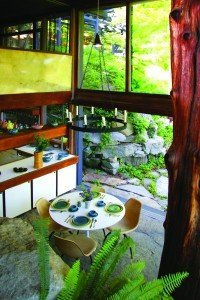 Dr. L.H. Roper, Professor of History at SUNY New Paltz and a scholar of international reputation in the field of Atlantic History has announced a symposium, ‘-Henry Hudson, New Netherland, and Atlantic History‘-, at SUNY New Paltz the weekend of 25-26 September, 2009. This host two-day international symposium on “The Worlds of Henry Hudson” is expected to be the premier intellectual event held in conjunction with the celebration of the quadricentennial of Henry Hudson’s exploration of the Hudson River. Leading historians from the Netherlands, France, and Germany, as well as the United States will present papers on a series of topics related to Hudson and his times.
Dr. L.H. Roper, Professor of History at SUNY New Paltz and a scholar of international reputation in the field of Atlantic History has announced a symposium, ‘-Henry Hudson, New Netherland, and Atlantic History‘-, at SUNY New Paltz the weekend of 25-26 September, 2009. This host two-day international symposium on “The Worlds of Henry Hudson” is expected to be the premier intellectual event held in conjunction with the celebration of the quadricentennial of Henry Hudson’s exploration of the Hudson River. Leading historians from the Netherlands, France, and Germany, as well as the United States will present papers on a series of topics related to Hudson and his times.
The program will include panel discussions, teaching workshops, and two luncheon addresses over two days to be held on the campus of SUNY New Paltz., as set forth below. At each session, two-to-three presenters will give talks on topics closely related to the character of the European exploration and colonization of the Hudson Valley, which arose from Hudson’s voyage, and the historical significance of the issues generated by these phenomena.
The emergence of the transatlantic perspective during the last two decades is a major development in the study of the history of Europe, Africa and the Americas during the 15th, 16th, 17th and 18th centuries. The scholars invited to this conference are among the major figures in advancing this perspective. The conference program is designed to provide an opportunity for the further integration of their work, and its advancement through publication of the papers it generates and by providing a means for secondary and elementary school teachers to incorporate this scholarship into their own classrooms.
A second goal, equally important, is to further the integration of the African, American Indian, and European contexts (“the transatlantic perspective” or “Atlantic history”) into teaching and learning about exploration and “colonial America” in our schools. The conference structure provides for interaction in each session among leading scholars of early modern Africa and Europe and of American Indian societies and current and future elementary and secondary school teachers.
The cost of registering for this conference will be $20/day and $15 per luncheon session. Teachers who wish to attend, with the exception of those in Ulster, Dutchess, and Orange Counties, should register through the Center for Regional Research, Education, and Outreach at SUNY New Paltz. The costs for attending the symposium will be payable directly to CRREO.
Teachers in Ulster, Dutchess, and Orange Counties who wish to attend one or both days should register via MyLearningPlan. Teachers in other counties should register through the Center for Regional Research, Education, and Outreach at SUNY New Paltz. Professional development hours are available for approval. The first fifty teachers who sign up and who have been participants in the Ulster BOCES Teaching American History Summer Institute for at least one week will have their registration fee paid by the TAH grant. Ulster BOCES will notify those registrants that their fee has been paid.
For further information, please contact Lou Roper of the Department of History at [email protected].
 An exhibition featuring the work and philosophy of renowned industrial designer Russel Wright will open May 4, 2013 at the New York State Museum. Russel Wright: The Nature of Design explores Wright’s career from the 1920s through the 1970s and features approximately 40 objects along with photographs and design sketches.
An exhibition featuring the work and philosophy of renowned industrial designer Russel Wright will open May 4, 2013 at the New York State Museum. Russel Wright: The Nature of Design explores Wright’s career from the 1920s through the 1970s and features approximately 40 objects along with photographs and design sketches.




